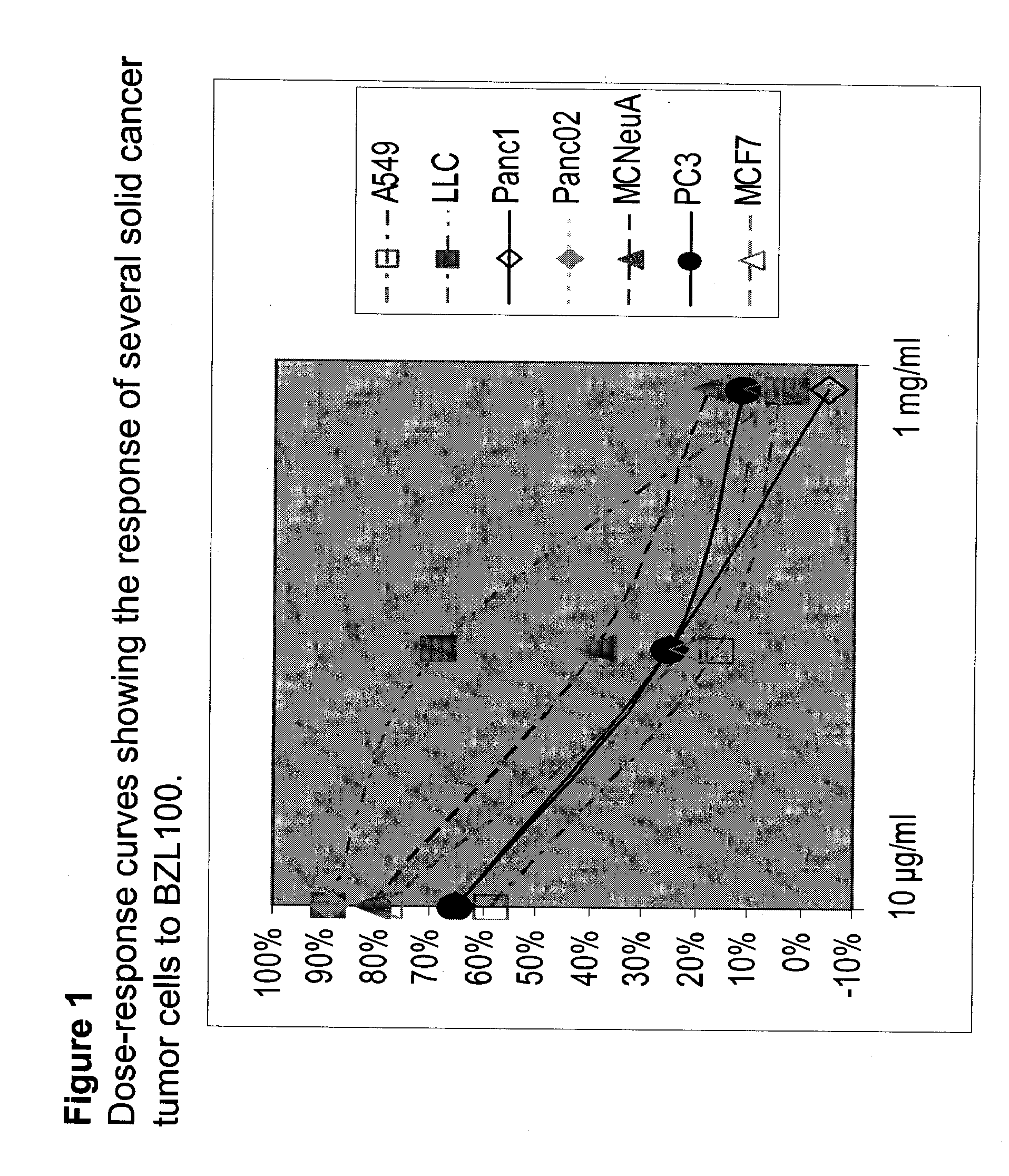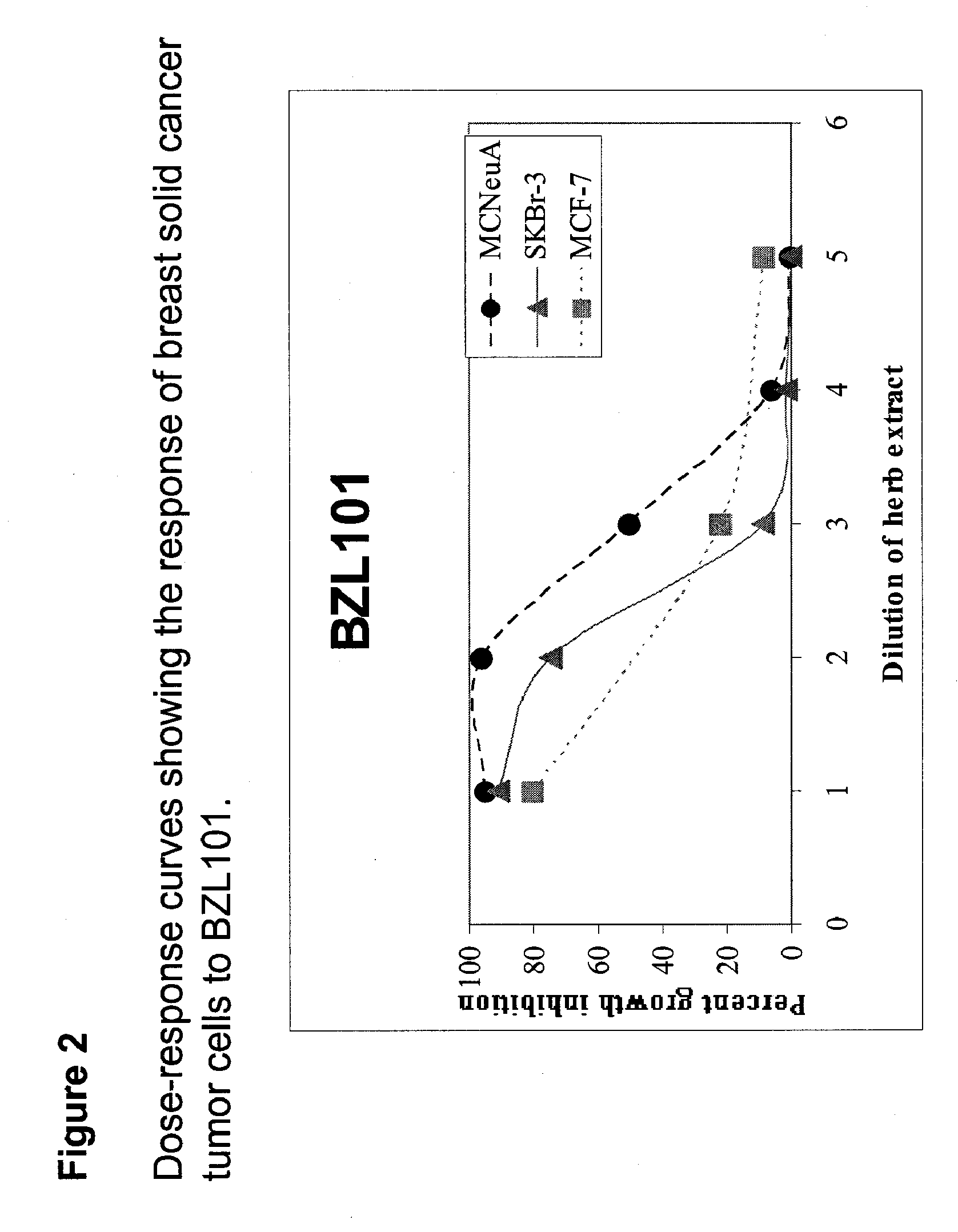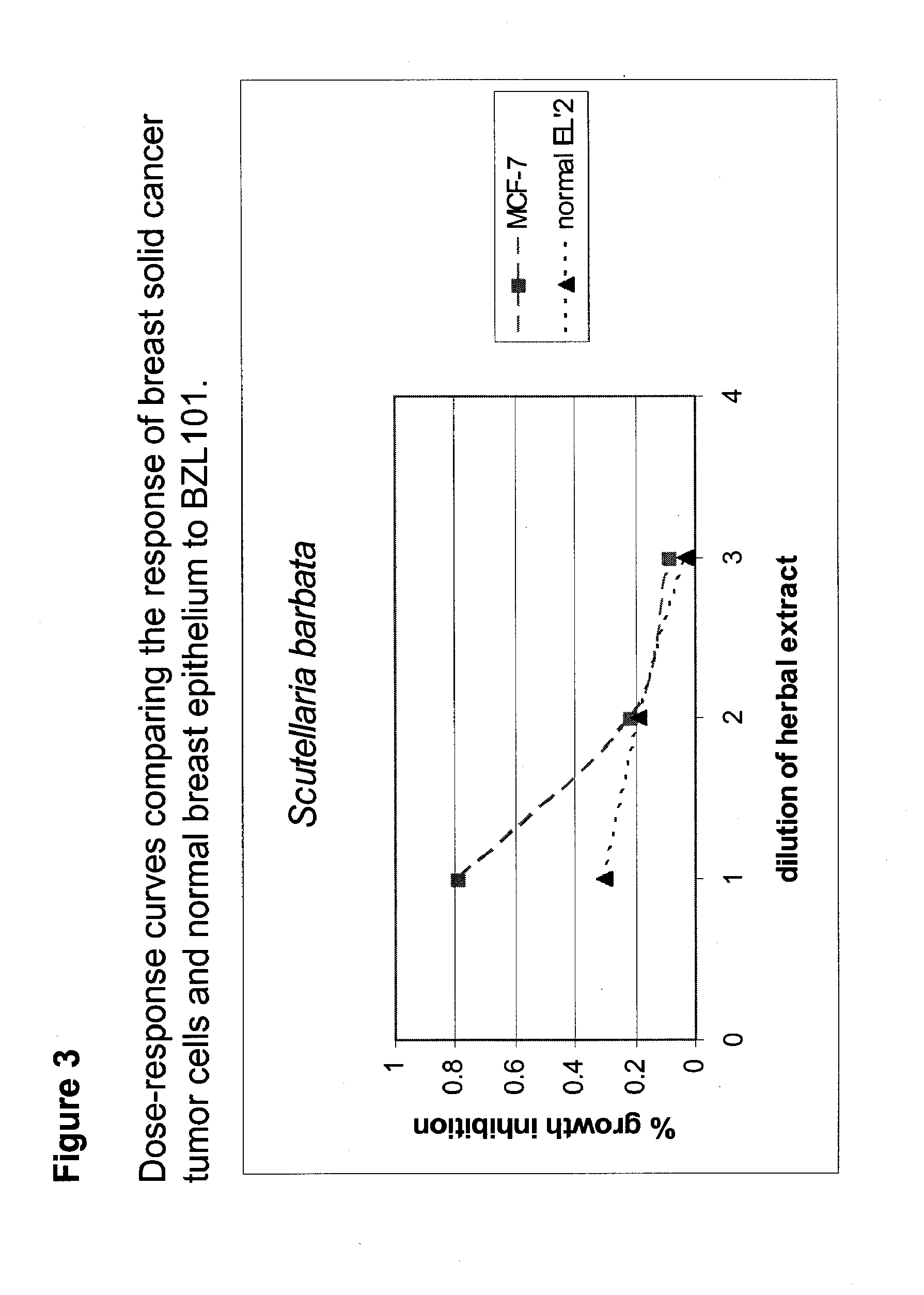Scutellaria barbata extract for the treatment of cancer
a cancer and extract technology, applied in the field of cancer treatment with scutellaria barbata extract, can solve the problems of cancer palliative symptoms, cancer-related transient regression, and patients with advanced metastatic breast cancer
- Summary
- Abstract
- Description
- Claims
- Application Information
AI Technical Summary
Problems solved by technology
Method used
Image
Examples
example 1
In vivo (IP) Efficacy of BZL101 in a Mouse Xenograft Model
[0087] In order to demonstrate the efficacy of BZL101 in the in vivo treatment of cancer, BZL101 was evaluated in a mouse xenograft model.
[0088] BZL101 was active via intraperitoneal (IP) administration in preventing tumor formation in a mouse xenograft model (FIG. 5). BZL101 was prepared as described in Preparative Example 1, above. Cells (105) of MCNeuA cells were injected subcutaneously into mice on day 0. BZL101 (0.5 ml or 1.0 ml) or control was administered to each mouse IP every two days. Tumor size (mm3) was estimated on the 17th, 21st, 23rd, 25th, and 28th day post administration. The results of this study, show in FIG. 5, demonstrate that BZL101 inhibited xenograft, suggesting that BZL101 can be an effective treatment for solid tumors in vivo.
example 2
In vivo (Oral) Efficacy of BZL101 in a Mouse Xenograft Model
[0089] In order to further evaluate the effect of the herb extract in vivo, BZL101 alone, BZL101 plus cyclophosphamide and cyclophosphamide alone were orally administered to mice having subcutaneous cancer xenografts.
[0090] As in Example 1, above, 105 cells were administered to each animal subcutaneously on Day 0. The animals were divided into four groups. The control group received only normal drinking water. The cyclophosphamide only group received 25 mg / Kg / day of cyclophosphamide in their drinking water. The BZL101 only group received 0.5 ml of BZL101 by oral gavage on Day 0 and every third day after that. The combination group received 0.5 ml / day BZL101 by oral gavage on Day zero and every third day after that, as well as 25 mg / Kg / day of cyclophosphamide in their drinking water. The results of this experiment are shown in FIG. 6.
[0091] From the results in FIG. 6, it can be seen that, as expected, cyclophosphamide alo...
example 3
Efficacy of BZL101 in Humans
[0092] In order to demonstrate the safety and clinical activity of oral BZL101, an aqueous extract from Scutellaria Barbata D. Don was studied in human patients with advanced breast cancer.
[0093] Eligible patients had histologically confirmed metastatic breast cancer and measurable disease. Patients did not receive any other chemotherapy, hormone therapy or herbal medicine during the trial. Patients received 350 ml (equivalent to 12 grams dry solubles BZL) BZL101 extract per day until disease progression, toxicity or personal preference caused them to discontinue. The primary endpoints were safety, toxicity and tumor response.
[0094] Twenty-one patients were enrolled and received BZL101. Mean age was 54 years (30- 77) and mean number of prior treatments was 3.9 (0-10). There were no hematologic, nor grade III or IV non-hematologic, adverse events (AEs). Some patients reported grade I and II adverse events, such as nausea, diarrhea, headache, flatulence,...
PUM
 Login to View More
Login to View More Abstract
Description
Claims
Application Information
 Login to View More
Login to View More - R&D
- Intellectual Property
- Life Sciences
- Materials
- Tech Scout
- Unparalleled Data Quality
- Higher Quality Content
- 60% Fewer Hallucinations
Browse by: Latest US Patents, China's latest patents, Technical Efficacy Thesaurus, Application Domain, Technology Topic, Popular Technical Reports.
© 2025 PatSnap. All rights reserved.Legal|Privacy policy|Modern Slavery Act Transparency Statement|Sitemap|About US| Contact US: help@patsnap.com



